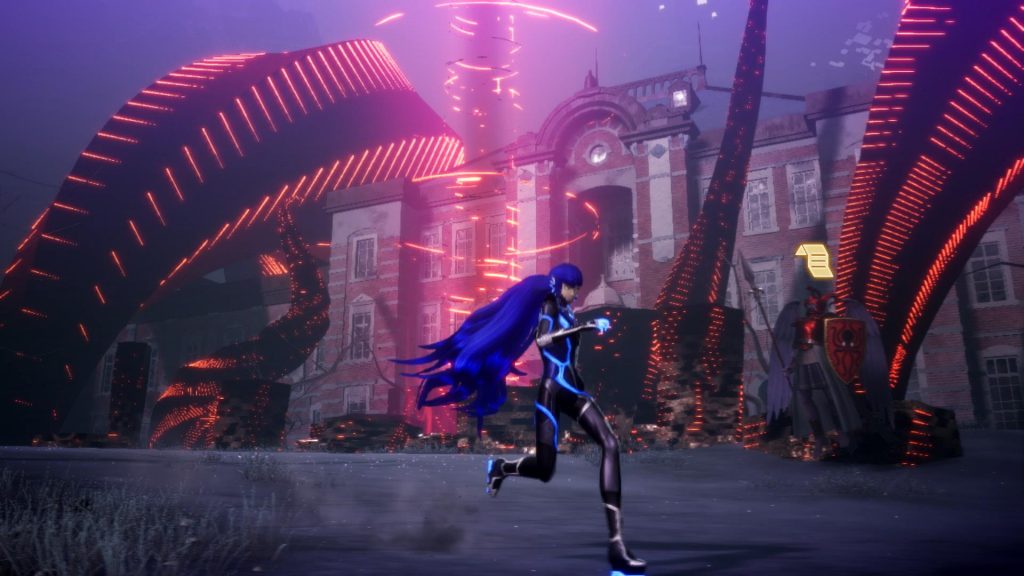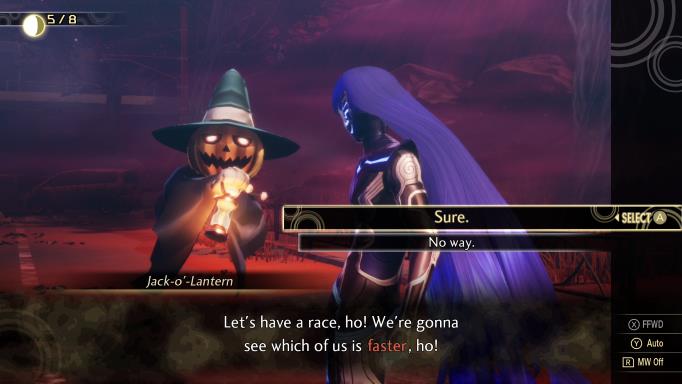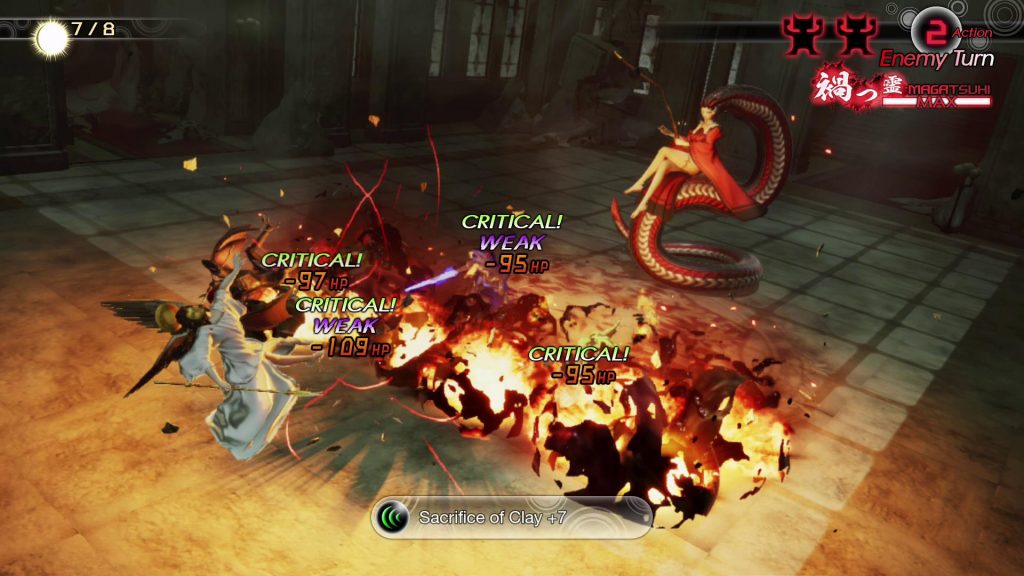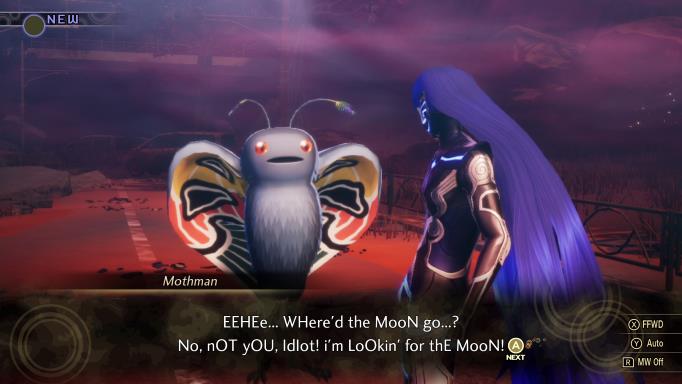Shin Megami Tensei: The original Monster Catching RPG Series and why Pokémon fans should care
Long before Pokémon, Shin Megami Tensei impressed Japanese gamers with its dark stories and imaginative Demons.
While the majority of Pokémon fans are awaiting the exciting releases of Pokémon Brilliant Diamond and Shining Pearl in early November, there is another monster-catching RPG game coming out around the same time that fans should keep an eye on, Shin Megami Tensei V (SMT V). Not only is this Japanese role-playing game (JRPG) series just as good as Pokémon, it led the way for Pokémon’s existence by being the first RPG series to allow players to recruit monsters and use them to fight in turn-based battles. For those who have only recently heard of the series, here’s a little history on the series and its mechanics, along with why I think Pokémon fans would love it.
History
The first game in the Megami Tensei series (which would later become the Shin Megami Tensei series) was Digital Devil Story: Megami Tensei which was released by developer Atlus and publisher Namco for the Nintendo Famicom in 1987. This game was a sequel to the popular Japanese book series of the same name by writer Aya Nishitani in the late 1980s. The book series follows protagonists Akemi Nakajima, a schoolboy who invents a Demon Summoning Program, and Yumiko Shirasagi, a schoolgirl who is the reincarnation of the Japanese goddess Izanami (Megami Tensei roughly translates to “Goddess Reincarnation” referring to Yumiko). In the novels, Akemi can use his program to summon the demon Cerberus (of Greek Mythology) to help him. In the Atlus game, Akemi is once again the protagonist and is able to recruit Cerberus and then use him in turn-based battles. After the success of the game and its sequel Digital Devil Story: Megami Tensei II, Atlus wanted to continue the franchise but with the creative freedom to divert from Nishitani’s novels. Thus Atlus created its own Megami Tensei games under the new title of Shin Megami Tensei (with Shin meaning “real” or “true”). This title, released on the Super Famicom in 1992, would go on to spawn many other mainline games as well as spin-offs including the Persona series.

Apocalypse Please
What sets the SMT series apart from other monster-catching RPGs like Pokémon is mostly its setting as well as the creatures themselves. The setting in the mainline series is usually an apocalyptic version of Tokyo overrun by “Demons”, the series’ monsters. While some Pokémon are sometimes inspired by mythological creatures, the Demons of SMT are all named mythological creatures or gods that have real-life cultural influences (note: not all “Demons” are demons, the term is a catch-all for mythological figures so even angels are considered “Demons” in the game). Not only are these creatures named and designed after real mythological figures, in most of the games they come with a compendium entry that provides information on them (like the Pokédex). For those with an interest in mythology, these compendium entries are one of the highlights of the series, allowing you to learn about real-life mythological figures and the cultures that surround them.
These myths also shape the story, as most of the mainline games allow you to align yourself with one group of demons, humans, or angels to fight the other groups that don’t share your ideology. Not only do in-game choices decide who you align with, but they also affect the outcome of the story itself with most games having multiple endings depending on your decisions. And to say these decisions affect the fate of the world or even the universe these games take place in is not an overstatement. The stories are usually dark, apocalyptic tales in which humans can change the very fabric of the world they live in.

Got to Convince ‘Em All
Another unique aspect of the SMT series is how you acquire the Demons you use in battle. Unlike in Pokémon where reducing the monster’s health and using an item will do, in SMT you need to actually negotiate with the Demons to get them on your side. Sometimes some money or an item is all it will take to convince a demon to join you. Other times, the Demons will ask you difficult questions and will only join you if you provide the answer that they prefer. Thus, these demon negotiations are puzzles in of themselves and are another entertaining part of the gameplay. However, a wrong answer in these negotiations is dangerous as it could lead to you losing your turn and the demon getting a free attack in.
Another way you can acquire Demons is to fuse ones you already have to create powerful new Demons. This is essential for dealing with the powerful bosses of the series which are usually at a much higher level than your team unless you’ve grinded levels for a while. Fusing also comes with the added bonus of getting to choose the new Demon’s Skills (the SMT equivalent to Moves in Pokémon).

Battle
Combat in SMT uses the “Press-Turn System” which is simple, yet engaging. You get a number of turn icons based on the number of party members you have currently in the fight (up to four). Each party member (including your character) can use various Skills to fight enemies. Like Moves, Skills have an elemental type associated with them, and hitting an enemy’s weakness will result in more damage. Unlike Super-Effective Moves in Pokémon, though, hitting an enemy’s weakness in mainline SMT will allow you to get another turn icon, giving you another opportunity to attack, buff, or heal. This only works once (and thus can’t be spammed) but it is a powerful incentive to use Skills that enemies are weak to. Enemies, however, can also take advantage of this system to gain extra turns when they use Skills that you or your party of Demons are weak to. This makes the combat overall challenging, but fair. Once you’ve used trial and error to discover a particularly hard boss’s weakness and fused a team capable of tackling that boss, the satisfaction of seeing all the fruits of your labor during the fight itself is substantial.
This satisfaction is further enhanced by the amazing battle themes across the series. Whether it’s the hard-hitting guitar of “Battle B2” in SMT IV or the orchestral grandeur of “The Fear of God” in SMT: Strange Journey, the music contributes to the intensity of the battles and the feelings of accomplishment after you conquer them.

Appeal for Pokémon fans
The reason I have decided to write an article on SMT on a very much Pokémon focused site is that I believe the series has appeal specifically for Pokémon fans (myself included). Admittedly, I stumbled into the franchise by chance, only picking up SMT IV because Nintendo announced the series would be crossing over with another one of my favorite series, Fire Emblem. As soon as I started playing it, though, I was immediately hooked. Everything from the dark atmosphere and story, to the music and unique Demon designs, captivated me. Pokémon uses mythology as an inspiration as well, but SMT takes it to another level by having its monsters be the mythological figures themselves. This, along with the dark apocalyptic setting, drew me into the story which was refreshingly philosophical for a monster-catching JRPG. While Pokémon is very character-focused in its narrative, SMT excels at worldbuilding. Every apocalyptic version of Tokyo is unique with its own reasons for being tipped towards order or chaos and its own mysteries to decipher. Obviously, the stakes in these worlds are very high and death is a common theme along with obedience, rebellion, personal introspection, and survival. These themes are what set it most apart from other Monster-catching JRPGs.
If you grew up with Pokémon, and love its monster-catching mechanics, but want a darker story with philosophical themes and multiple choice-driven endings, then you might want to consider trying out SMT V when it launches in November (at least until Brilliant Diamond and Shining Pearl release). If you are already an SMT fan, let me know your favorite Demons in the comments below.

Info credit:
Source 1: https://megamitensei.fandom.com/wiki/Digital_Devil_Story:_Megami_Tensei
Source 2: https://megamitensei.fandom.com/wiki/Megami_Tensei
Source 3: https://megamitensei.fandom.com/wiki/Shin_Megami_Tensei
Source 4: https://www.thegamer.com/shin-megami-tensei-title-explain-meaning/
Edited by bobandbill and NipahRika.
